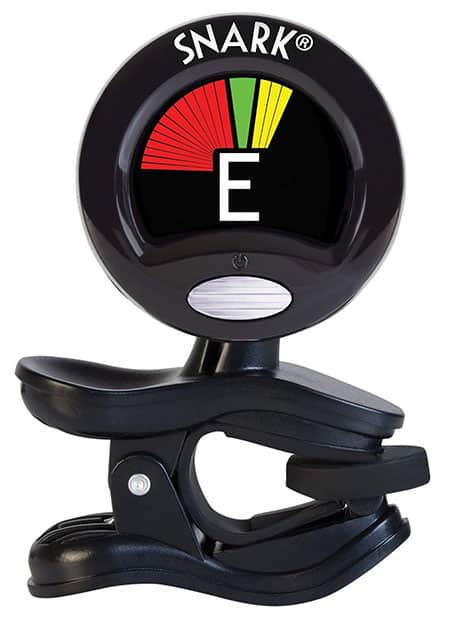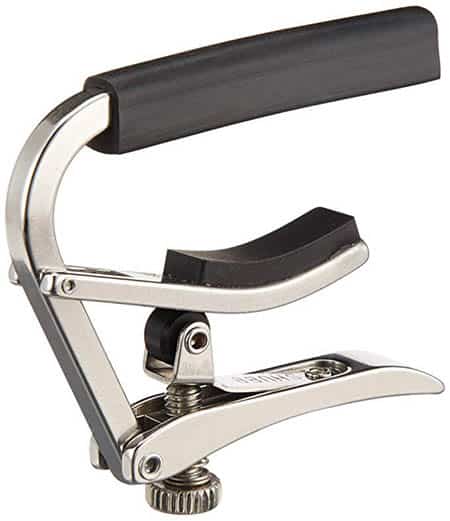There’s nothing quite like bringing home a brand new guitar. You are one of the first to lay your hands on it, it seems to be telepathically playing music to you already, and of course, there’s that new guitar smell. I can say that after twenty-five years of playing and buying guitars, it just gets better each time.
As you are shopping for a new guitar, there are feelings of anticipation and excitement as you daydream and drool over the guitars you want to take home with you. However, at some point, you snap back into reality and begin to wonder what your money is buying. Knowing what is included and what other investments you may need to make along with the actual guitar purchase is important. So what does a new guitar actually come with?
Do New Guitars Come Setup?
For those who may not be familiar with this idea, a “setup” is like a chiropractic adjustment for a guitar. A skilled tech or luthier makes adjustments to the neck, nut, saddle, bridge, etc. to make sure the guitar plays comfortably and in tune.
Guitars do typically come already set up from the factory using factory specs. These specs are kind of a “default” setting that most players will generally find to be comfortable. However, each player is unique and as one gets more experience, they start to learn their own personal preferences of neck straightness and string height (action) and opt to have a setup done right away after the purchase.
It should be noted that a guitar may go through some changes during the shipping process. Depending on the destination, the guitar could have ended up in a completely different climate than the factory from whence it came. If buying a guitar from a showroom floor, it could have been sitting there for many months or even years. It may be due for an adjustment in that case.
If buying from a physical shop, ask them to set up the guitar to make it easier for you to play. An experienced guitar tech or luthier will be able to help here.
Forearmed is forewarned, so if you want to know what should be included in a setup then read our article here, What Is A Professional Guitar Setup And Do You Need One?
So yes, they do come already set up, but that doesn’t mean it is still in optimal playing shape at the time of ownership transfer.
Do New Guitars Come With Strings?
All guitars will come with strings. The guitar is built in such a way that it can’t go for extended periods of time without string tension. The quality of the strings may not be up to snuff and it is very likely they will need to be replaced as soon as you get the guitar home. This is not just because the strings are likely aged beyond their useful life, but because as a beginner you may need a lighter or softer string that what is standard for a new guitar.
Depending on the manufacturer and the model, a guitar will either come with a good, industry-standard string like D’addario or with a really cheap set like GHS or Fender strings with the knowledge that the strings will likely need to be replaced by the time it finds an owner. Many guitars on a showroom floor will be equipped with a set of coated strings like Elixir so that they last a long time and have a good quality sound for customer demonstration.
Do New Guitars Come Tuned?
Very good question. The answer is most often “no”. When a guitar is shipped to a retailer or a customer’s home, a guitar needs to have the strings loosened so as not to make the guitar vulnerable to damage during shipping. Strings that are tuned up to pitch in a package can put extra strain on the guitar as it moves from one climate to another and gets bumped around with other cargo.
Once it arrives to a dealer, then a store associate will typically tune the guitar up to pitch so that customers can walk right in and start playing a properly tuned guitar. So if the guitar is being mailed to you, the tuning will be quite flat. If you get it from the store, then it will be tuned for you.
Do New Guitars Come With A Case?
This depends on whether or not you have bought a top-of-the-line model or a more basic model. The more expensive guitars usually come with a hardshell case. Typically, if you spend under $1000, you are buying the case separately.
Some student models may come with a soft case or “gig bag”, but not always. Oftentimes, you can talk the sales associate into giving you a deal on a good case when purchasing a guitar, but that usually only works at the big box stores like Guitar Center.
If you are not buying something like a “beginner’s package” that comes with several accessories, then you should budget for another $30-$50 for a basic case or bag. You will want to protect the guitar from the elements during transport and have a safe place for storage when you aren’t playing the guitar.
Do Guitars Come With Picks?
More often than not, you will get a small handful of free picks from the manufacturer or the retailer. If you buy strings online, many of those dealers will include promotional picks with string purchases (such as StringsAndBeyond.com). A salesman at a music shop will almost always be more than happy to supply you with a few picks to take home with you, but these will usually be very basic picks.
Just like guitar strings and setup specifications, guitar picks are a matter of personal preference. You may want to buy additional picks in a sampler so you can get a good variety of pick gauges and materials to experiment with. No need to go with the expensive synthetic tortoise shell picks. A good celluloid, nylon, or Tortex pick will be a good start.
Do Guitars Come With a Strap?
Again, if you are buying some sort of packaged set, then this will be one of the items included. Otherwise, you are on your own again here. The vast majority of guitars come equipped with strap buttons, while many of the basic models might come with just one strap button. In those cases, you either need a second strap button installed or get a strap that ties around the headstock with what looks like a shoestring.
The guitars that do come with straps are usually a very cheap strap just to get you by. They aren’t usually very comfortable, nor are they very secure. If you are wanting to play standing up, then I would suggest budgeting an extra $15-$25 for a woven or leather strap.
An accessory that I can’t recommend strongly enough is either a locking strap or a set of strap locks. Locking straps are typically a ratchet-type connection on the ends that grip the strap buttons and lock into place. A strap lock system comes with locks that install to the strap itself along with special strap buttons to receive the strap lock. They are inexpensive and easy to install yourself.
Having the strap locked in place will really help guard against the eventual failure of a strap end or the moment the strap comes undone under the weight of the guitar if you take your hands off the guitar too much. I’ve seen that happen many times and it’s not pretty. Broken headstocks and cracked bodies can be prevented for just a few dollars. I’d say that’s worth it.
What A Guitar Doesn’t Come with That Every Beginner Needs:
Most student or beginner packages will come with many of the accessories you need, but the downside is that most of these packages are pretty limiting and don’t always come with the highest quality items. Here are some of the best addons to get when you are getting started.
Tuner
A tuner is the most important accessory you can get. If you can’t tune your guitar, you will sound terrible forever. The good news here is that with smartphone apps, there are many decent tuners you can buy for your phone for little to no money.
When buying or downloading a tuner, just be sure you getting a chromatic tuner. Chromatic tuners are much more accurate due to the range of pitches they can “hear”.
Alternatively, and this would be my option, you can buy an excellent chromatic tuner for very little money (under $10) that includes a metronome, like the Snark SN5X (click here to check price on Amazon)
Metronome
This is a critical practice tool that not nearly enough players utilize. Rhythm can be a challenging aspect of music and it is important to train your sense of timing.
Again, these can be downloaded for free or for a very small fee. If you want to buy an actual metronome from a music store, there are combination tuner/metronomes so you can have both of these things in one device.
Capo
Capos clamp over the strings along the fretboard so you can change the key you are playing in while still playing the same chord shapes. This is useful for playing songs that are not in “guitar-friendly” keys, or if you plan on singing so that you can better dial in the key to suit your vocal range.
Luke provides a full breakdown on the best capo under $20 here, Best Guitar Capo Under $20. He tried and tested an adjustable Shubb S1 capo against two well-known trigger capo, you can watch the results but the winner was the Shubb S1 (click here to check price on Amazon).
There are “trigger” style capos that are easy and fast to use. I recommend getting a capo with adjustable tension, like the Shubb S1 Deluxe, so that you don’t get a capo that squeezes the strings too hard which will pull your guitar out of tune.


